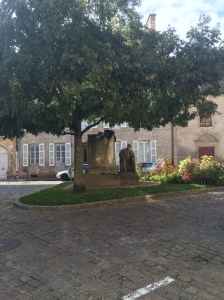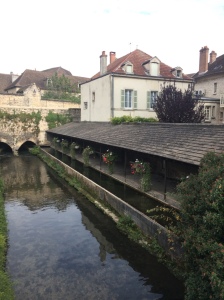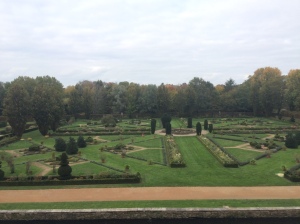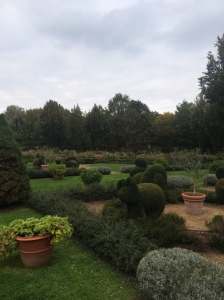Our field trip to Bourgogne (Burgundy) began in Beaune, the wine capital of the region. We toured the Hotel-Dieu, which was built in the mid-1400s by Nicolas Rolin, Chancellor of Burgundy, as a hospital for the poor. It was a working hospital until the late 1970s. The most striking feature is the roof, which is covered in small colored tiles.
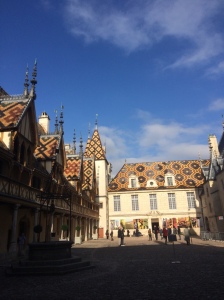
The attention to detail inside the building is unbelievable as well. Inside the main hall, where most of the beds were, the whole floor is covered in about 10” square tiles, each one with the family symbol, a rook, and “seule *” meant to symbolize that Rolin’s wife was his only star.
At the other end of the hall there is a pretty impressive chapel. It was supposed to help boost the morale of the patients and the nuns. The highlight of the room would have been the altarpiece, now kept in a separate dark room, due to its fragile condition. It was hard to believe how old they were because the colors looked so vibrant, and I don’t think that they would restore the painting so brightly, but it is still very impressive to look at.
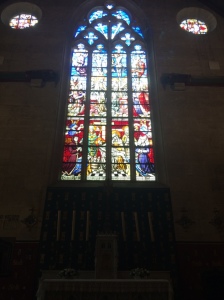
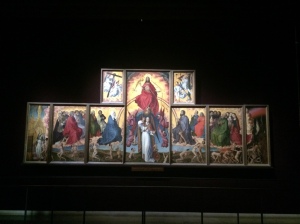
After that, we still had a bit of extra time in Beaune, so I did some exploring around the old, central part of the city. It all felt very classically French, with the cobblestone streets, open shutters, heavy gates, ivy growing on the walls of the homes, etc.
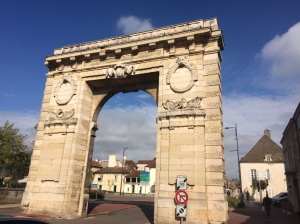
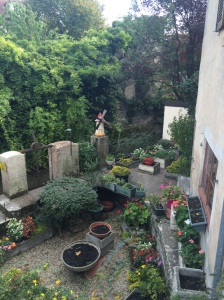
The next stop was the Château de Cormatin. The drive was very colorful and gorgeous. Covering the rolling hills were grape vines. The plants were about three or four feet tall, but all of the leaves had changed color, so the hills were colored every shade that you can imagine between golden yellow and dark maroon. It was gorgeous. As was the inside of the Château, which reminded me a lot of a French version of Downton Abbey…
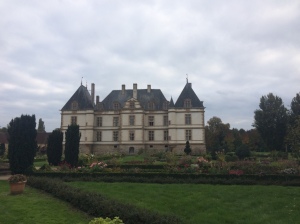
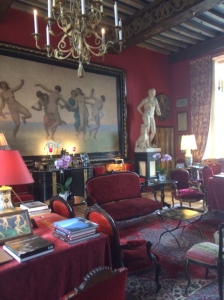
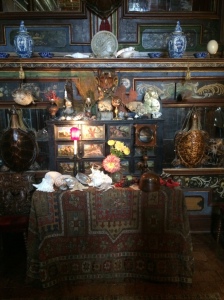
The château was built by the Marquis d’Uxelle in the 17th century to be used by his family in the summer. Most rooms were covered with this wood paneling that had paintings of flowers, animals, and any random design. It doesn’t look like wood because the entire surface is covered with paint. One of the most fascinating things that our guide told us was the story of the designs in the rooms of the wife’s suite. They were entirely painted blue with gold designs painted over the top. On top of the gold sections were raised, wooden cutouts, also painted gold to enhance the look of it all. Part of the design includes a crown, but the wooden crowns were ripped off of the wall during the revolution to show that the family was pro-revolution, not pro-monarchy. A large kitchen was also installed in the main part of the house during this time to demonstrate that they were part of the working class and could cook their own food.
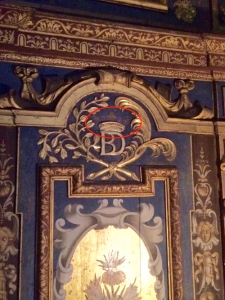
The most impressive parts of the property were the gardens. They were stunning. There was a hedge maze, hedges cut into the shapes of different animals, fountains, an elegant sort of watchtower, and so many different types of plants.
